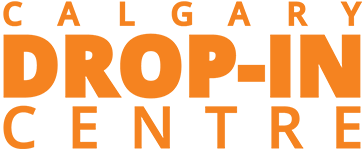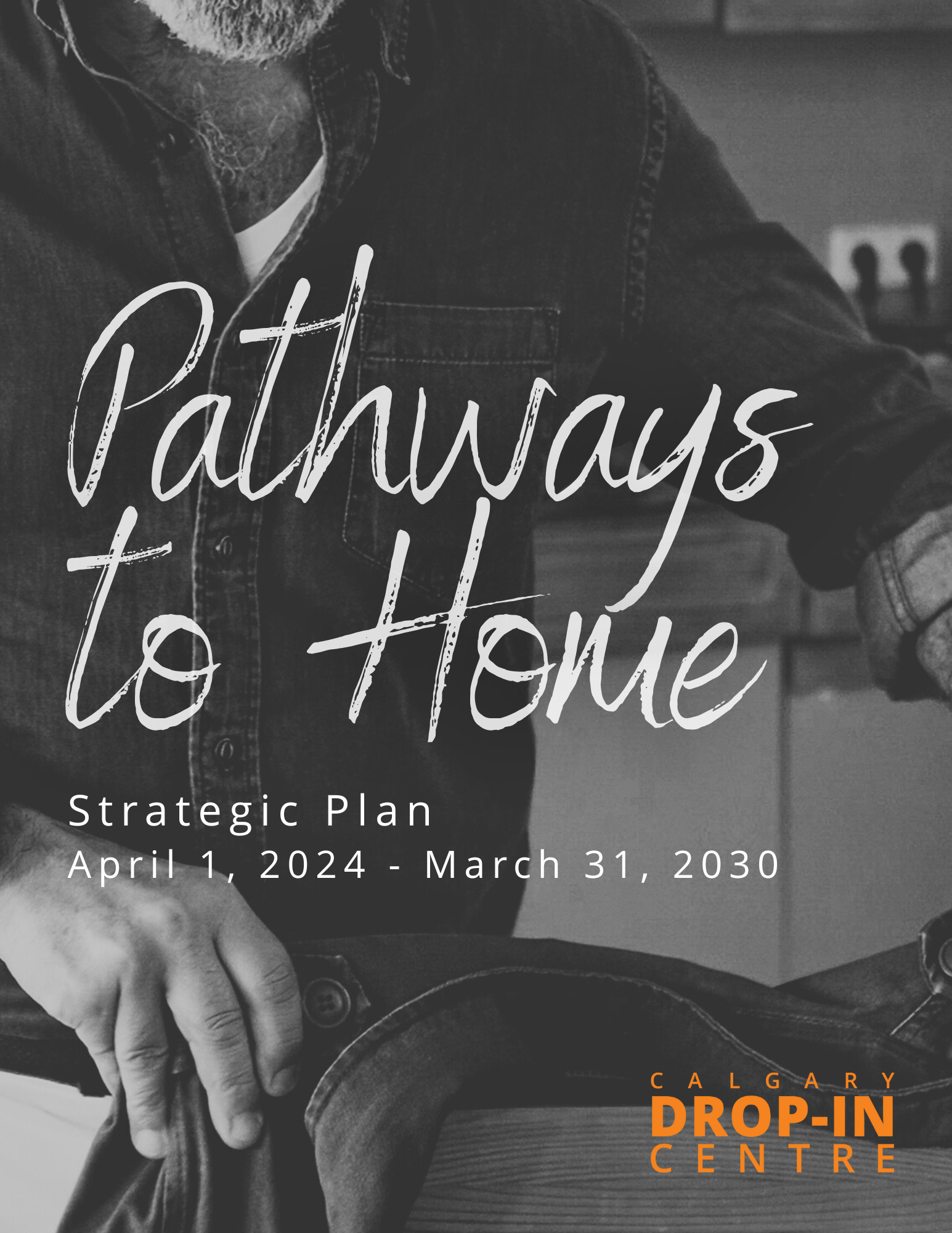Pathways to Home
Strategic Plan 2024-2030Together, we will build pathways for people to find their way home.
At the Calgary Drop-In Centre (the DI), we welcome adults at risk of or experiencing homelessness. Working collaboratively with community partners, we offer a broad spectrum of care including emergency shelter, health and recovery programs, and housing options – all geared to help people find their way home.
This strategic plan outlines the areas in which we’ll focus our work between April 1, 2024 and March 31, 2025.
Our goal over these years is to minimize the impacts of homelessness by increasing access to, expanding the range of, and improving the outcomes of supports.
Our Strategic Priorities:
We will prioritize our people.
To best serve those experiencing or who are at risk of homelessness, it is imperative that we ensure all team members are well-trained, informed, resilient, engaged, and as safe as possible.
For the duration of this strategic plan, we will continuously improve workplace safety, wellness, and resilience of all teams.
To achieve this, we will:
- Design and implement talent acquisition, team member engagement and development frameworks ensuring alignment of policy and procedures congruent with the team member life cycle across the agency.
- Embed diversity, equity, and inclusion across talent acquisition, team member learning, team member leadership development, and team member recognition programs.
- Leverage two-way communication throughout the agency with a focus on encouraging input, increasing relevance of information shared, and accelerating team commitment to the strategic aim.
- Enhance occupational health & safety (physical and psychological) across all teams and DI facilities.
Progress Report:
- In year 1, we successfully achieved 3-year accreditation from the Canadian Accreditation Council for our Health, Shelter, and Housing programs.
We will prioritize the people who access our services and facilities.
Those we serve are the focus of all we do. We will offer a broad range
of programming for maximum impact. In some cases, the DI will opt to maintain and improve services, and in other cases services may be integrated, intensified, diversified, or pursued through collaboration.
The work in this priority ensures that each person accessing DI services and facilities is best supported based on their unique circumstances.
By 2030, we will optimize the impact of programs, supports, and interactions.
To achieve this, we will:
- Better understand the diversity of people accessing services to influence quality and variety of services.
- Explore options to better address and enhance safety for individuals accessing services in a person-centred way.
- Design, evaluate, and implement a strategy to pursue specialized lower capacity and alternate housing-focused shelter options.
- Embed housing-focused best practice standards across the agency.
Progress Report:
- In year 1, we coordinated a frontline initiative, the Rapid Response Program, that connects with individuals in crisis before emergency services are needed. The program has reduced 911 calls by over 80%, leading to significant cost savings for the city’s emergency response system and is now being scaled in other jurisdictions.
We will prioritize organizational vitality.
We have a responsibility to ensure the organization is best poised for the future, which means that we test ideas, that we examine the possibility of streamlining offerings, and that we think strategically about the way we operate. Thoughtful investments to equip our organization will, in turn, maximize the outcomes for those we serve.
Over the next several years, we will increase the impact of our work by fortifying our capacity.
To achieve this, we will:
- Strengthen our financial position and resources through responsive financial management and assertive fund development.
- Establish succession plans for critical roles across the agency.
- Proactively use data in decision making, program development, and resource deployment.
- Enhance technology across the agency.
- Improve and maintain the improved condition of physical assets.
- Configure physical assets, including land and property, to best realize our mission.
Progress Report:
- In year 1, we launched a Capital Modernization Project and made upgrades and refurbishments to critical DI infrastructure, making our facilities safer and more comfortable.
We will prioritize community collaboration.
When it comes to ending homelessness, there is much work to be done by us all and we must be proactive in generating mutual understanding across our local communities, as well as advocate for advancements to the standards of housing-focused services that will have an impact on policy and the ways in which we operate.
We will continuously lean into our respective strengths with key stakeholders including partners, governments, and donors. We will advocate, remove bottlenecks, and improve flow of service.
To achieve this, we will:
- Work with partners to integrate housing-focused services standards beyond the DI.
- Engage with and cultivate mutual understanding with neighbouring communities.
- Promote collaboration among sector organizations.
- Develop a public policy process and advance the DI’s policy advocacy.
- Generate and influence housing options for people exiting homelessness.
- Increase advocacy activities across the continuum of care.
Progress Report:
- In year 1, we continued to focus on Reconciliation and build relationships with Indigenous-led organizations and Nations to build seamless pathways and provide cultural supports.
If you would like a phsyical copy of our Strategic Plan, please connect with us.





